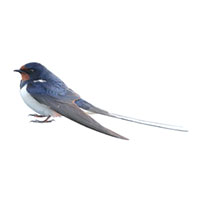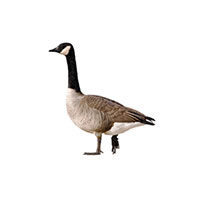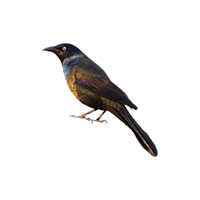Seagulls in Wisconsin
Although these birds are referred to as seagulls, a common miscalling, these are properly called gulls. Out of the 19 North American gull species, the Ring-billed Gull, Herring Gull, and the Bonaparte’s Gull are the most common gulls around Wisconsin.
Seagull Diet
Their omnivorous diet varies with place and season, but typically includes fish, crustaceans, worms, eggs, and insects. Herring gulls patrol shorelines picking scraps off the surface. They are loud and competitive scavengers, happy to snatch another bird’s meal. They spend much of their time perched near food sources, often in congregations.
Seagull Habitat & Nesting
If your business is located near a large body of water, your property may be at greater risk of a problem with gulls. Many modern buildings with flat roofs and straight sides are similar to the sort of cliffs seagulls nest on in the wild. The urban environment offers the gulls easy living with landfill sites, street litter near bars and restaurants, and household garbage providing an abundant and easy food source.
The gulls usually nest in colonies, but sometimes in isolated pairs. The nest is built by both the male and female on the ground, next to an object such as a shrub or rock to protect it from the wind. It is shallow, usually lined with grass, feathers, debris.
Seagull Mating & Life Cycle
Males establish breeding territories and both members of a bonded pair defend it with threatening postures, warning calls, and chase-attacks in the air and on the ground. Courtship rituals include mate-feeding and remaining bonded as long as both live. They return to the same territories each breeding season producing one brood per year with three olive-colored eggs in each clutch. A 25 day incubation period is done by both the male and female. The young birds spend 35-42 days in the nest during which one parent is always in the nest. Both parents feed the young by regurgitation. The young are capable of flight 45-50 days after hatching.
Seagull Damage & Threats
The close association of seagulls and people can lead to the spread of bird-transmitted diseases, especially since gulls feed on polluted sources such as garbage dumps and bring germs directly to public areas in towns and cities.
Disease
Seagulls are known to spread diseases, like Salmonella, which could impact employees and customers if the problem is left unresolved.
Aggressive Birds
Seagulls can become very territorial and aggressive towards people when they are rearing their young.
Risks to Business
Customers could be put off from entering your store due to the presence of these pest birds. Additionally, maintenance and cleaning costs could be very high for a business to cover if there is a big problem with droppings.
Droppings
If people get too close to their nesting sites, seagulls will often defecate and vomit on people to protect their young chicks.
Seagull Prevention & Control
Seagull Prevention
There is a wide range of bird proofing methods that can help protect your business from seagulls.
- Removal of food sources – ensure lids are kept secure on bins and trash bags are not left in the open (as gulls can rip open trash bags).
- Removal of attractive nesting sites – in urban areas, is an effective way to help prevent a seagull problem from the beginning.
Preventing defacement of buildings due to nesting and roosting will reduce maintenance and cleaning costs. Noise, smell, and the risk of infection will also be eliminated, improving the overall health and safety of your business.
Seagull Control
Bird Control Services provides customized solutions to address bird concerns through removal, exclusion, and deterrence. Factors that determine the best method of control include an area of application, bird species, location, access. Spikes, netting, and electrical deterrents are the most commonly used solutions.
The Federal Migratory Bird Act states that most birds and their parts – feathers, eggs, nests, etc.- are protected by federal law from being killed, taken, transports, possessed, bought, sold, imported, or exported without a valid federal permit. This includes a majority of the bird species found in Wisconsin, with the exception of resident games birds – such as pheasant, quail, and grouse, and feral species such as the sparrow, starling, and pigeon.
If issues with crows arise, count on a professional pest management service to take care of the problem knowledgeably and successfully. Bird services are limited to commercial clients.
Need help with Seagulls?
We'll call you! Leave your information below.
Pests Belong Outside!
Leave your information below and we will give you a call back.
"*" indicates required fields
*During normal business hours. After hours inquiries will be returned the next business day.






